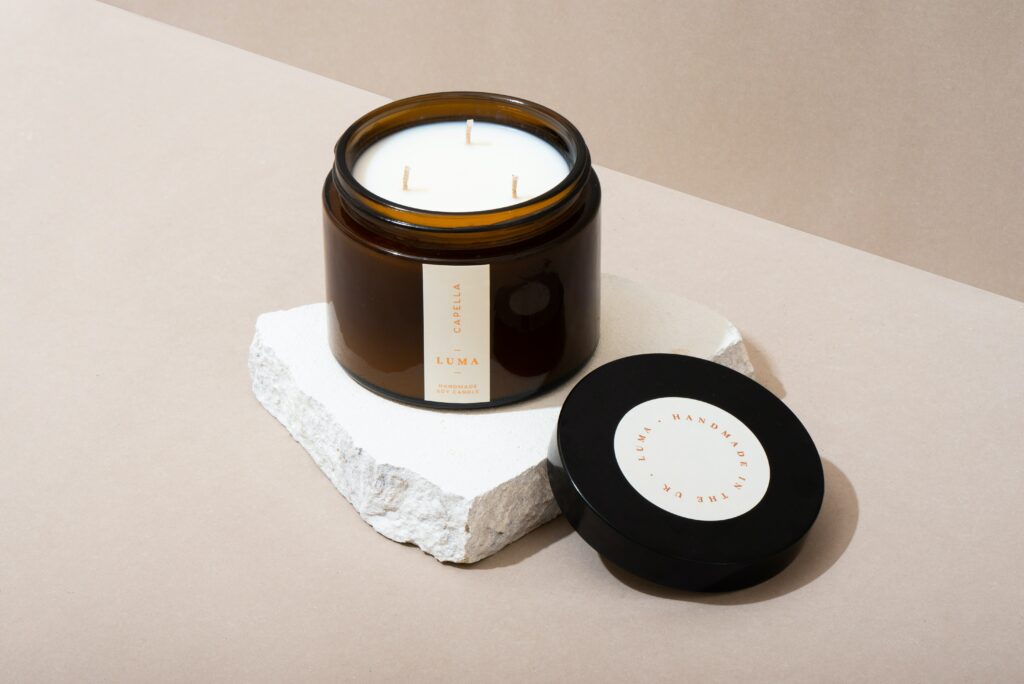Greatest Candle Wick Selection for Affordable Candle Types

Candle making is an art that combines the beauty of design with the science of combustion. A crucial element in this craft is the Candle Wick Selection, a decision that influences everything from the burn quality to the overall aesthetic of the candle. In this comprehensive guide, we’ll explore the nuances of choosing the right wick for various candle types, focusing on factors like durability, resistance, and the specific properties of different wick materials such as cotton and wooden wicks.
Understanding the Importance of the Right Wick
The wick is the heart of the candle. It’s not just a piece of string; it’s a carefully designed component that affects how the candle burns, how long it lasts, and even the fragrance throw. Choosing the right wick is essential for creating a candle that burns evenly and safely.
Key Factors in Wick Selection
- Wax Type Compatibility: Different waxes like soy wax, beeswax, and paraffin wax have varying burning characteristics, which require compatible wicks.
- Candle Size and Shape: The diameter and height of the candle determine the wick size needed for an even burn.
- Fragrance and Color Additives: These can affect the burning properties of the candle, thus influencing wick choice.
Types of Wicks and Their Properties
Cotton Wicks
- Versatility: Ideal for a wide range of waxes, including soy, beeswax, and paraffin.
- Consistent Burning: Known for their reliability and consistent burn rate.
- Eco-Friendly Options: Many cotton wicks are lead-free and eco-friendly, like those found in Candlewic’s Eco Wick Collection.
Wooden Wicks
- Unique Aesthetic: Offer a rustic, natural look and a distinctive crackling sound.
- Strong Flame: Tend to create a larger, more robust flame.
- Wax Compatibility: Work well with denser waxes like soy wax and beeswax.
Specialty Wicks
- For Containers: Standard Container Wicks are designed to burn evenly in container candles.
- For Votives: Standard Votive Wicks ensure a complete burn in smaller votive candles.
- Pre-tabbed Wicks: Convenient for easy placement, as seen in Candlewic’s Tabbed Wick Selection.
Selecting Wicks Based on Candle Types
For Soy Wax Candles
- Wick Recommendation: Cotton or wooden wicks.
- Why: These wicks provide a clean burn and work well with the softer consistency of soy wax.
For Beeswax Candles
- Wick Recommendation: Thicker cotton wicks.
- Why: Beeswax is denser and burns hotter, requiring a sturdier wick.
For Paraffin Wax Candles
- Wick Recommendation: Standard cotton wicks.
- Why: Paraffin wax is versatile and burns well with a variety of wick types.
Tips for Perfecting Your Candle Wick Selection
- Test Your Wicks: Always conduct a burn test to see how a wick performs with your specific candle formulation.
- Consider the Environment: The burning properties can vary based on temperature and altitude.
- Stay Informed: Keep up with the latest in wick technology and trends by exploring resources like Candlewic’s Candle Making Kits and Best Sellers.
Certainly! I’ll add a section on how to make a homemade wick, incorporating the provided hyperlink.
Crafting a Homemade Wick: A DIY Guide
While there’s a wide variety of ready-made wicks available, sometimes the allure of crafting a candle from scratch extends to making your own wick. Creating a homemade wick can be a fulfilling part of the candle-making process, offering a deeper connection to the craft. Here’s a simple guide on how to make a homemade wick.
Materials Needed
- 100% Cotton String: Ensure it’s untreated and not synthetic.
- Wax: Soy, beeswax, or paraffin wax can be used to coat the wick.
- Scissors: For cutting the string to the desired length.
- Pot and Heat Source: For melting the wax.
Steps to Make a Homemade Wick
- Cut the Cotton String: Measure and cut your cotton string to the desired length, considering the size of your candle. Add a few extra inches to account for the dipping process and trimming.
- Melt the Wax: Using a double boiler method, melt your chosen wax. You can use any wax, but if you’re unsure, Candlewic’s Wax Selection offers a variety of options suitable for wick-making.
- Soak the String: Dip the cotton string into the melted wax, ensuring it’s fully submerged. Let it soak for a few minutes to absorb the wax.
- Dry the Wick: Remove the string from the wax and lay it straight on a piece of parchment paper. Allow it to cool and harden. You may need to repeat the dipping process a few times to achieve the desired thickness.
- Prime the Wick: Once the wick is coated and dried, it’s ready to be used in your candle. Remember to prime it by lighting the wick for a few seconds and then extinguishing the flame. This process helps ensure a consistent burn when the wick is used in a candle.
Customizing Your Wick
Creating your own wick allows for customization. You can adjust the thickness, length, and wax type based on your specific candle requirements. This DIY approach adds a personal touch to your candle-making project.
Comparing the Longevity of 3-Wick vs. 1-Wick Candles
When it comes to candle longevity, the number of wicks can play a significant role. Many candle enthusiasts often ponder whether a 3-wick candle or a 1-wick candle lasts longer. Understanding the burn dynamics of these two types can help in making an informed choice.
1-Wick Candles
- Burn Rate: Generally, 1-wick candles burn slower than their multi-wick counterparts. This is because there’s only one source of flame consuming the wax.
- Heat Distribution: The heat is concentrated around one wick, which can sometimes lead to uneven melting, especially in larger candles.
3-Wick Candles
- Even Melting: With three wicks, the heat is distributed more evenly across the candle, reducing the chances of tunneling (where the wax melts unevenly, creating a tunnel-like effect).
- Faster Burn: However, this even melting comes at a cost. Three wicks mean that more wax is being melted at a faster rate, leading to a shorter overall burn time.
Which Lasts Longer?
In terms of total burn time, a 1-wick candle typically lasts longer than a 3-wick candle. This is because the single flame consumes wax at a slower rate. However, the choice between the two often depends on personal preference and the specific use of the candle. For instance, 3-wick candles are great for quickly filling a room with fragrance and creating a warm ambiance.
Maximizing Candle Life
Regardless of the number of wicks, proper candle care is crucial for maximizing its lifespan. This includes trimming the wick to the right length, ensuring even melting, and avoiding drafts. For more tips on how to light and maintain your candles correctly, check out this insightful article: Lighting Candles the Right Way.
By understanding the characteristics of 1-wick and 3-wick candles and practicing proper candle care, you can enhance your candle experience and make the most out of each candle, regardless of its wick count.
Conclusion
The art of candle making is deeply influenced by the choice of wick. Whether you’re a hobbyist or a professional candle maker, understanding the intricacies of Candle Wick Selection is key to crafting candles that are not only beautiful but also burn efficiently and safely. By considering the type of wax, the size and shape of the candle, and the desired burn characteristics, you can select the perfect wick for your candle creations.
For more insights into candle making and to explore a wide range of wick options, visit Candlewic.




